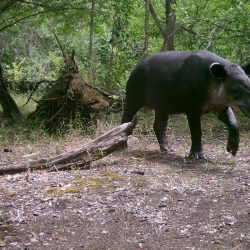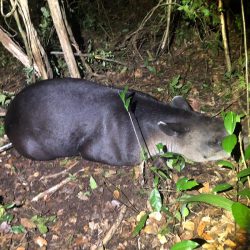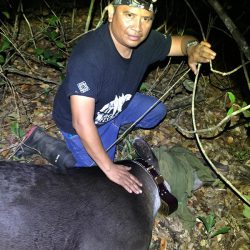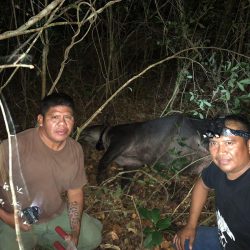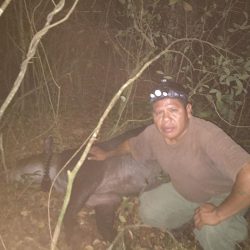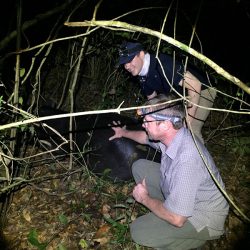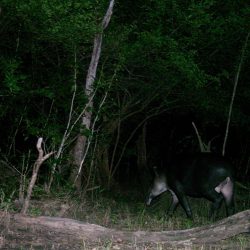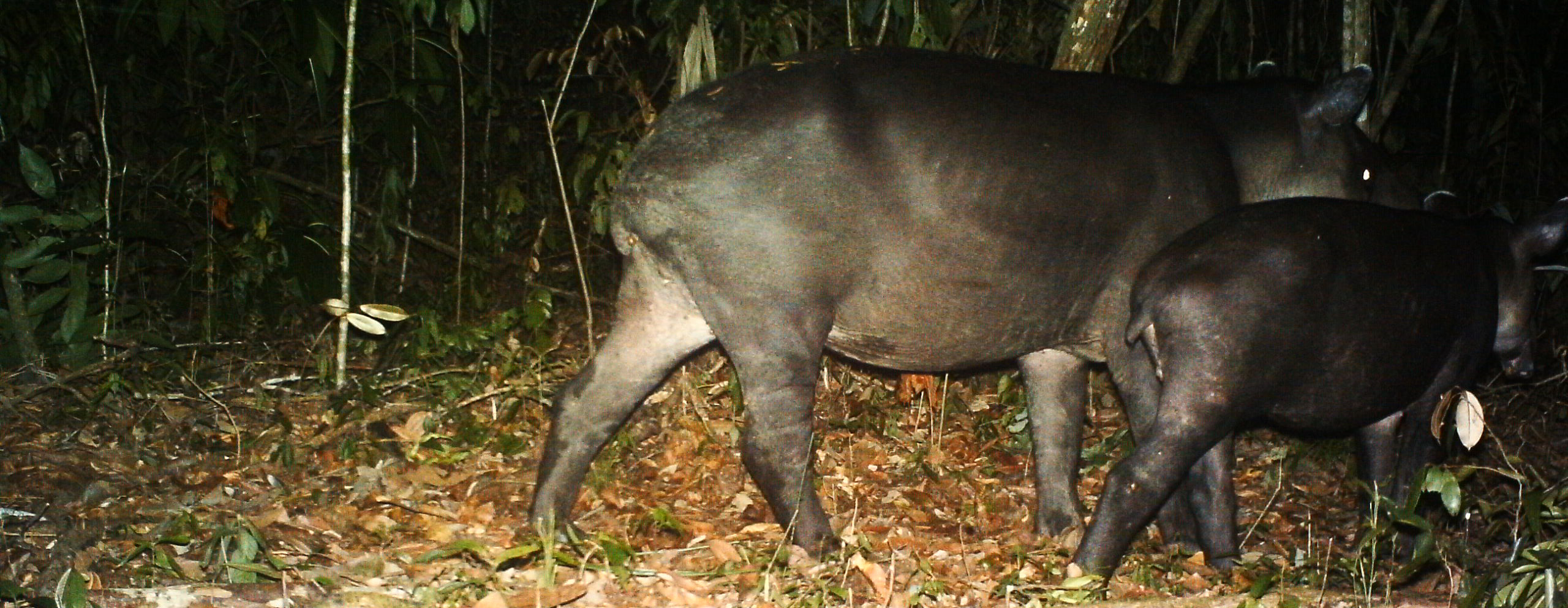
The Baird Tapir
The Baird’s tapir (T. bairdii) “Gill 1865” is the largest land mammal in Central America. Historically, its geographic distribution extended from southern Veracruz, México, to northeastern Ecuador (Reid 2009; Garcia et al. 2016). Its altitudinal range extends from sea level to the mountains (3,620 meters asl: Naranjo 2009) and exhibits an affinity to lowlands and is highly dependent on water (Wainwright 2007). It plays a unique role in forest regeneration due to its feeding ecology as a herbivore and seed disperser (Fragoso et al. 2003).
Both the distribution and population size of the Baird’s tapir has suffered dramatic reduction in the past decades. The population estimates have had a reduction 50% in three decades and the central America region has had a reduction of 70% of forest cover in 40 years (Garcia et al. 2016). It was considered vulnerable by the International Union for the Conservation of Nature (IUCN) in 1996 but was subsequently uplisted to endangered in 2002 (IUCN 2013). Moreover, it was ranked 34th in urgency for conservation among more than 4,000 mammals species of the whole world that were assessed by experts from the institute of Zoology of London due to its level of evolutionary distinctiveness and level of threat (Isaac et al. 2007). It is now considered the 10th rarest forest mammal in the Neotropic (Dobson and Yu 1993). This alarming status is due to the combined effect of natural rarity, habitat loss, habitat fragmentation, hunting and their vulnerability to cattle-borne disease (Castellanos et al. 2008).
Currently at Runaway Creek, PhD Candidate and FWC’s Project Coordinator, Wilber Martinez, is conducting a study of the endangered Baird’s Tapir within the Selva Maya. As part of his PhD research with the Biodiversity and Conservation Department at El Colegio de la Frontera Sur, Wilber is capturing and collaring tapirs with a GPS unit to study their movement patterns and habitat range. He is also collecting data from photos of tapir captured on trail cameras located throughout the reserve. So far, Wilber’s research team has been successful in capturing and collaring two tapirs at Runaway Creek – one male tapir last June and most recently, a female tapir!

